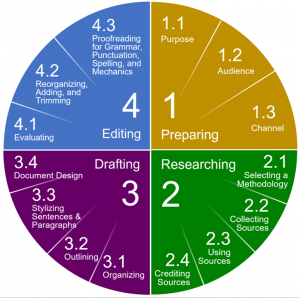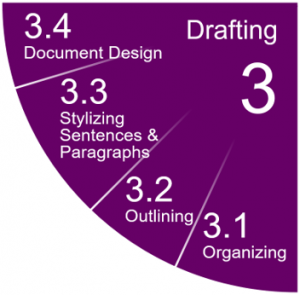Chapter 4: The Writing Process 3: Drafting
Learning Objectives
- Use effective reading strategies to collect and reframe information from a variety of written materials accurately.
i. Identify the organizational structure of a variety of written messages
ii. Separate main ideas from subordinate ideas in written materials - Apply outlining techniques to begin drafting a document.
- Plan, write, revise, and edit short documents and messages that are organized, complete, and tailored to specific audiences.
i. Apply standard patterns of organization
ii. Recognize and use basic patterns of standard English
iii. Incorporate elements of business writing style
iv. Apply proper use of sentence structure, grammar, and punctuation
v. Craft unified and coherent sentences and paragraphs
vi. Support message content with visual elements - Apply the principles of reader-friendly document design to various written formats.
Now that you’ve planned out your document and gathered information that meets your audience’s needs, you’re just about ready to start drafting the document’s message. At this point it’s worthwhile reminding yourself that the words you start entering in your word processor will look different from those your reader will eventually read. By the end of the drafting stage examined in this chapter, your document will be partway there, but how much revising you do in the fourth stage (see Ch. 5) depends on how effectively you’ve organized your message in the first step of this third stage.


Figure 4: The four-stage writing process and Stage 3 Breakdown

